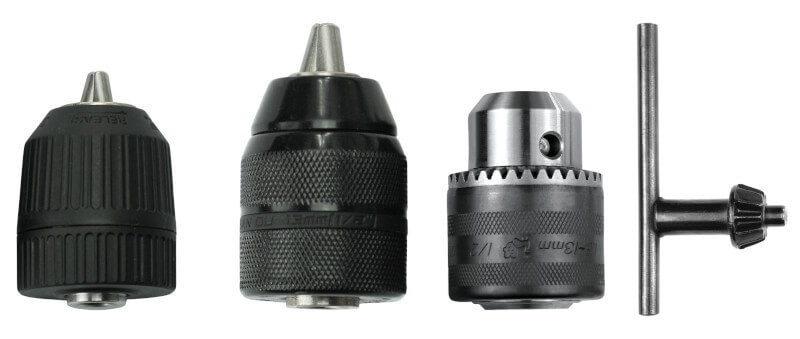070 51 51 50 +38670 51 51 50 All days of the year from 8:00 a.m. to 7:00 p.m.
Email info@tisto.eu
Address
-
 ToolsPopular
ToolsPopular
-
 Light construction machinery
Light construction machinery
-
 Electric wire tools
Electric wire tools
-
 Power cordless tool
Power cordless tool
-
 Accessories for power tools
Accessories for power tools
-
 PumpsNew
PumpsNew
-
 Heating, cooling and solar technology
Heating, cooling and solar technology
-
 Battery products
Battery products
-
 Charging products
Charging products
-
 Photovoltaics
Photovoltaics
-
 Inverters
Inverters
-
 Electromobility
Electromobility
-
 Hand tool
Hand tool
-
 Security and health at work
Security and health at work
-
 Home and garden tools
Home and garden tools
-
 Cosmetic appliances
Cosmetic appliances
-
 Building materials
Building materials
-
 Garden machines and tools
Garden machines and tools
-
 Measuring techniqueBest selling
Measuring techniqueBest selling
-
 Microscopy and astronomy
Microscopy and astronomy
-
 Firefighting equipmentTop
Firefighting equipmentTop
-
 Farm machinery
Farm machinery
-
 Office equipment and computers
Office equipment and computers
-
 Sanitary ware
Sanitary ware
-
 Pallets
Pallets
-
 Rental
Rental
-
 All categories
A complete list of all categories in your online store
All categories
A complete list of all categories in your online store
Drill, impact drill, drill - how to choose the right tool
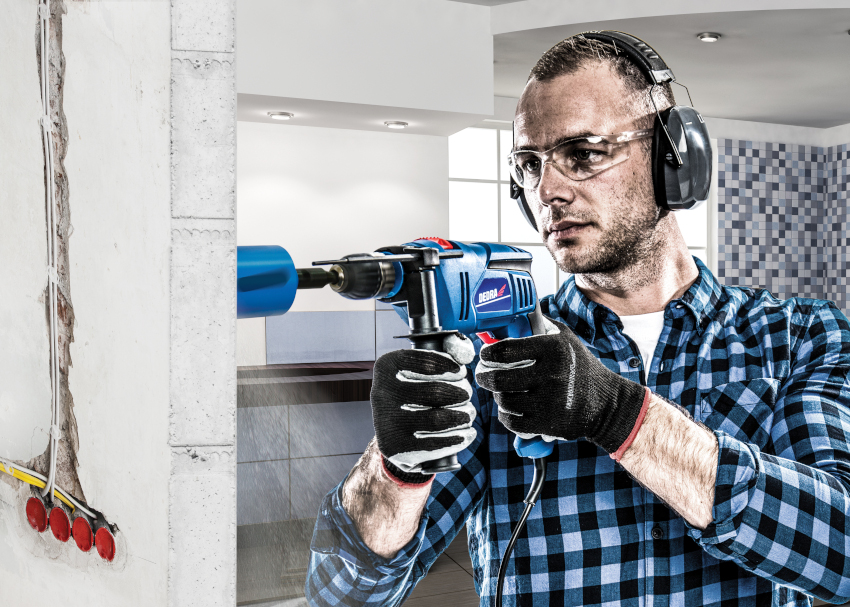
A drill is the basic tool of every DIY enthusiast. The multitude of applications, different types of materials in which to work, different drill chucks generate more and more constructions. Such a wide variety makes it difficult to say which drill will be the best for us. So let's take a look at what's available in the offers:
Drill constructions available on the market
Due to the specificity of work and conditions, numerous types of drills have been created, depending on the application. If we mainly work with plasterboard or assemble furniture, we will need completely different tools than a person working mainly in concrete or during the assembly of heavy wooden structures. We divide drilling tools into:
 impactless drills - these are light, handy tools for making holes using the impactless technique. They are perfect for working in wood, metal and for creating holes in aerated concrete. Relatively small dimensions and low weight allow for comfortable work even with the device overhead, which is not so easy in the case of heavier constructions.
impactless drills - these are light, handy tools for making holes using the impactless technique. They are perfect for working in wood, metal and for creating holes in aerated concrete. Relatively small dimensions and low weight allow for comfortable work even with the device overhead, which is not so easy in the case of heavier constructions.
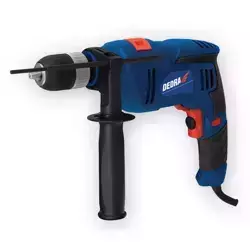 impact drills - these are devices usually equipped with a mechanical impact. Thanks to the use of impact, working in hard materials such as reinforced concrete is possible, but it will not be as effective as in the case of rotary hammers or rotary hammers. The hammer drills have an operating mode switch that allows for non-impact drilling, e.g. in wood or metal. Hammer drills, just like hand drills, have a classic 10 / 13mm drill chuck (with a key or self-locking) for cylindrical drills.
impact drills - these are devices usually equipped with a mechanical impact. Thanks to the use of impact, working in hard materials such as reinforced concrete is possible, but it will not be as effective as in the case of rotary hammers or rotary hammers. The hammer drills have an operating mode switch that allows for non-impact drilling, e.g. in wood or metal. Hammer drills, just like hand drills, have a classic 10 / 13mm drill chuck (with a key or self-locking) for cylindrical drills.
 hammer drills - these are tools with high impact power. It is possible thanks to the use of the electropneumatic impact technology, which reaches even 5J and more when using SDS PLUS chucks and above 10J for tools with SDS MAX chuck. Due to the technological requirements of the impact, the SDS chuck must have a slight play, which is manifested by a gentle beating of the working tip (no axial work of the drill). For this reason, hammer drills are not recommended for precise locksmith or roofing works. However, like hammer drills, they have a mode selector and a drilling function without hammering. Hammer drills are perfect for drilling many holes in concrete where the impact force and drilling speed in this type of materials count. Unlike hammer drills, they additionally have a shoring function, very useful, for example, when removing old glaze or leveling surfaces (removing old tile adhesive, etc.).
hammer drills - these are tools with high impact power. It is possible thanks to the use of the electropneumatic impact technology, which reaches even 5J and more when using SDS PLUS chucks and above 10J for tools with SDS MAX chuck. Due to the technological requirements of the impact, the SDS chuck must have a slight play, which is manifested by a gentle beating of the working tip (no axial work of the drill). For this reason, hammer drills are not recommended for precise locksmith or roofing works. However, like hammer drills, they have a mode selector and a drilling function without hammering. Hammer drills are perfect for drilling many holes in concrete where the impact force and drilling speed in this type of materials count. Unlike hammer drills, they additionally have a shoring function, very useful, for example, when removing old glaze or leveling surfaces (removing old tile adhesive, etc.).
 bench drills - it's ona row intended for stationary use in a workshop or garage. Thanks to the use of several ratios, we can precisely and better adjust the rotational speed to the diameter of the drill and the material being processed. Bench drills have a built-in stand that allows for precise drilling. An additional advantage is the optional swivel table top and the possibility of mounting a machine vice on the drill table, eg DEDRA 1299 for fixing the workpieces.
bench drills - it's ona row intended for stationary use in a workshop or garage. Thanks to the use of several ratios, we can precisely and better adjust the rotational speed to the diameter of the drill and the material being processed. Bench drills have a built-in stand that allows for precise drilling. An additional advantage is the optional swivel table top and the possibility of mounting a machine vice on the drill table, eg DEDRA 1299 for fixing the workpieces.
 Cordless drill drivers - these are universal tools with which a skilled DIY enthusiast can often perform work that a layman would do only with a heavy drill. For basic work, a compact model like the DED7040 is enough. Extremely light construction allows for efficient and effective work even in uncomfortable positions. And for more difficult tasks, you can choose the hammer drill DED7142. This enables efficient drilling in concrete, of course, it will not replace hammer drills if we work mainly in such material.
Cordless drill drivers - these are universal tools with which a skilled DIY enthusiast can often perform work that a layman would do only with a heavy drill. For basic work, a compact model like the DED7040 is enough. Extremely light construction allows for efficient and effective work even in uncomfortable positions. And for more difficult tasks, you can choose the hammer drill DED7142. This enables efficient drilling in concrete, of course, it will not replace hammer drills if we work mainly in such material.
Drilling machines - the most important parameters
Since we already know what constructions are available on the market, how do they differ, in addition to the shape? Below are the most important parameters that distinguish the devices.
Rotational speed - does it matter?
The rotational speed of the motor is one of the parameters that definitely differentiate drills from rotary hammers. The former reach up to 4,000 rpm, while rotary hammers work at a speed of about 900-1500 rpm
What is this caused? First of all, this is due to the different design of the gear and the purpose of the tool. Higher rotational speed translates into better cutting precision, which is needed when processing metal or wood. When working in concrete or brick, precision takes a back seat, and the most important thing is drilling strength and efficiency. Additionally, due to the use of a hammer, the material is crushed with each blow (even several to several dozen thousand times per minute), and the rotation of the drill, in addition to cutting, mainly removes the debris from the hole.
Engine power - more equals better?
Each device with an electric motor has a power rating expressed in Watts [W] or kiloWatts [kW]. Theoretically, the higher the rated power, the more powerful the engine, and more precisely, the higher the engine torque. Unfortunately, the engine power is not only a greater demand for energy, but also often a greater weight of the device.
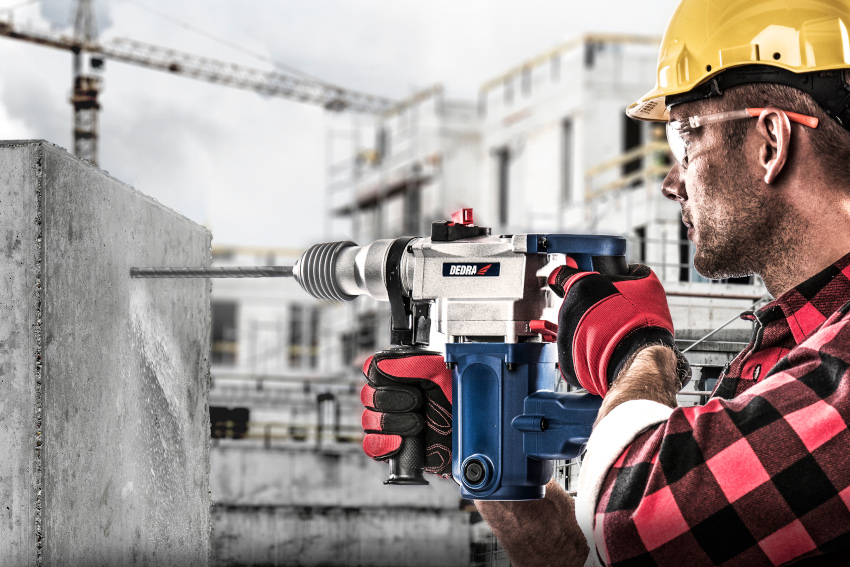
Tool size - its weight
This is a very important parameter that is often overlooked. In the pursuit of engine power or stroke, we often forget how uncomfortable it is to work with a heavy tool. For example, drilling a few holes above your head can effectively discourage DIY. Therefore, before choosing a device, we need to consider what it is for, because too large a device will be not very handy or not to be used in tight, difficult to reach places.
Stroke - impact energy
This parameter is used with hammer drills, hammer drills, hammer drills and all other drilling devices equipped with the hammer function. The unit of the impact force is the joule [J]. 1 joule corresponds to a hit of 100 g of slowly falling weight from a height of 1 m. Apparently 100g is not much, but the high frequency (even tens of thousands of beats per minute - 32,400 for DED7142) means that tools equipped with even a 1J impact force will drill a hole in hard concrete much faster than a non-impact drill.
The shock can be generated by a mechanical transmission or an electro-pneumatic shock system. In cheaper, smaller structures, jIt is a mechanical shock that requires the device to be pressed against the drilled surface, which causes the gear to engage and obtain the impact.
In hammer drills, which are designed for more intensive work, there is an additional function that is not available in classic hammer drills - chiselling. Thanks to this function, we can crush concrete surfaces, e.g. walls, or chisel tiles from walls using an appropriate working tip, e.g. SDS + WPD40 flat chisel . The presence of this function necessitates the use of a different type of stroke in the very design of the device. Electropneumatic impact is a mechanism whose task is to generate the impact force measured in [J] at the top of the working tip (drill or chisel), without unnecessary "force" pressing the device to the surface in which we drill or chisel. During operation, the rotor of the engine transfers its rotation to the connecting rod mechanism ending with a piston, and the intensive movement creates an air cushion inside the head, which pushes another piston out. This piston, pushed out by compressed air, hits the hammer, which transfers the force generated inside the device to the working tip, i.e. a drill or chisel. One whole cycle takes place in a fraction of a second and is characterized by a parameter called the stroke frequency. The frequency of impact in rotary hammers is usually the value counted in thousands of beats per minute, thanks to which the hammer drills are dedicated to intensive work with hard materials such as concrete or reinforced concrete.
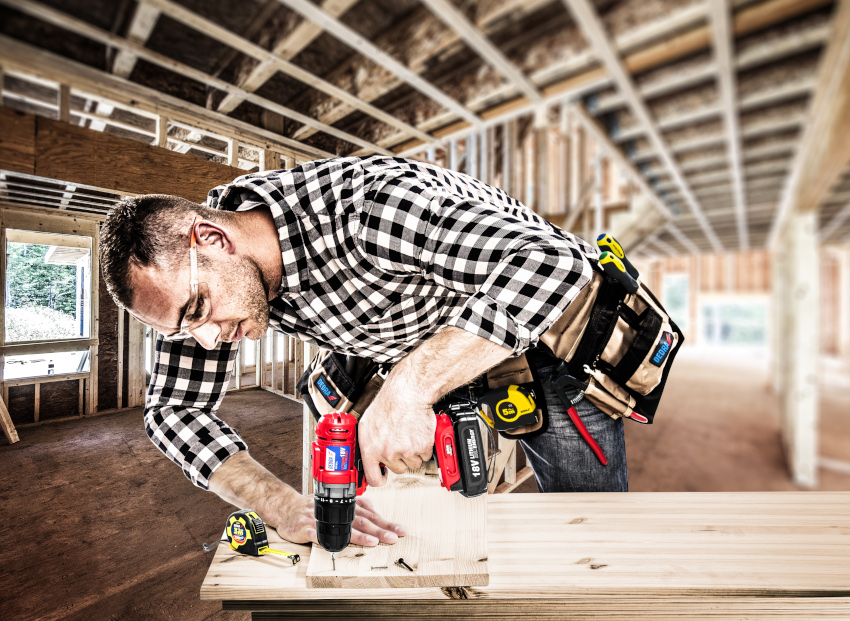
Power type
A very important technical parameter. It determines where we can use the device. Devices powered from the mains, that is the popular 230V socket, have excellent working parameters, high impact power, etc. But they have one major disadvantage. They need an external power source. For drilling outside the workshop or garage, we will need an appropriate extension cord. And a home extension cord in places exposed to moisture is asking for a visit from an electrician.
The second group of tools are cordless power tools. Thanks to the use of lithium-ion technology. Their parameters are more and more often similar to their equivalents powered from the socket. Unfortunately, excellent mobility and the ability to drill anywhere is paid for with work time. During intensive work, we must be equipped with two batteries that allow for alternate work. This group includes not only cordless drills, but also a hammer drill like the DED7048 with an impact force of 1.8J, which is already a good parameter for a battery powered device powered by an 18V motor.
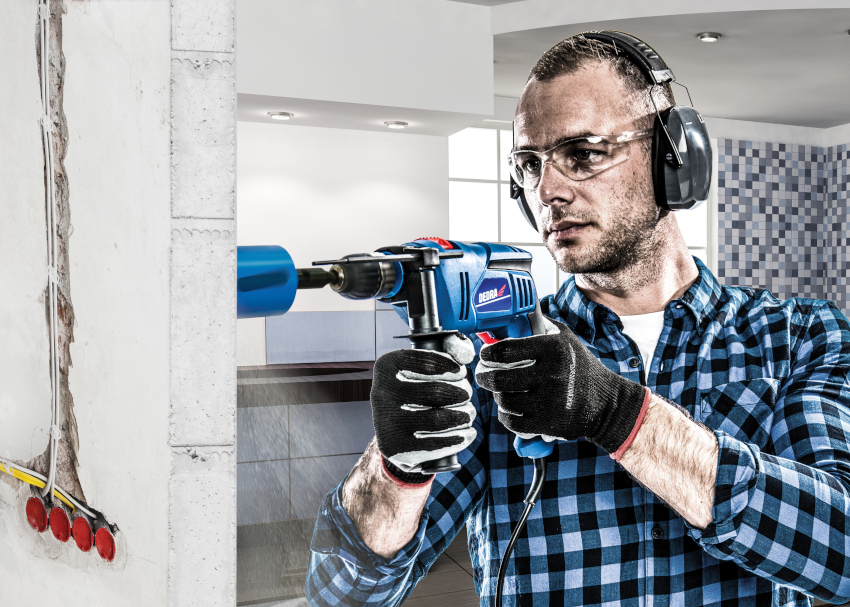
Drill chuck - what does a drill have to do with fur
The drill chuck is the element in which we attach the working tip (drill, chisel, holesaws, etc.). Popularly referred to by DIY enthusiasts as fur. Depending on the design and type of device, we can choose from power tools equipped with:
key chuck - designed for drill bits with a cylindrical shank shape or screwdriver bits with a HEX shank. Many DIY enthusiasts find this to be the grip that holds the drill bit. Manual tightening with a wrench results in a perfect fit of the clamping jaws to the surface of the drill, which prevents the drill bits from hitting and slipping, especially those in the minimum diameter range. Key holders are available in two versions, up to 10 and 13 mm. However, replacing the working tip in this type of holder is cumbersome and requires a head key such as the YKS002 and YKS003
self - locking chuck - a very popular type of drill chucks. It is perfect for drills and drivers, in which we change the working bits quite often. The body can be made of plastic or all metal. The three jaws include a cylindrical drill bit. In this holder, we can also use elements with HEX type mounting, such as bits, blade drills, etc. Similarly to the key version, it is available in sizes 10 and 13mm
SDS PLUS chuck - developed in 1975 by BOSCH on the basis of the HILTI solution, since 2006 it has become a standard system for fixing drill bits and work bits in more powerful power tools. The name SDS comes from the German Spannen durch System, that is, system mounting, previously supposed to be associated as "Steck-Dreh-Sitzt" - put-turn-ready. The diameter of the handle is 10 mm, although the maximum diameter of the drill used is up to 30 mm. In fact, using the SDS type chuck is very convenient, and changing the drill bits is child's play.
SDS MAX chuck - With the increase in the power of the devices, it was necessary to use more resistant to work solutions. The SDS MAX chuck is designed for SDS MAX drill bits with 18mm shank diameter. This is almost twice as much as the popular SDS PLUS. Such a large shank allows the use of drills with a diameter of more than 30mm, and even with a diameter of 50mm. This type of handle can be found primarily in rotary hammers such as DED7837.
handle, Morse taper - a variety of the drill chuck used primarily in table drills or machine tools. The special, conical structure of the drill bits prevents them from falling out or turning in the holder, even when processing metal with a large diameter of the drill bit or cutter. Strong fit and precise assembly require the use of a special punch to replace the drill bit.
HEX handle - designed for power tools for the toughest work. Mainly found in demolition hammers like DED7848 and DED7849. Due to the very high impact power in these devices, reaching even 50J, the handle allows only forging work, without drilling.
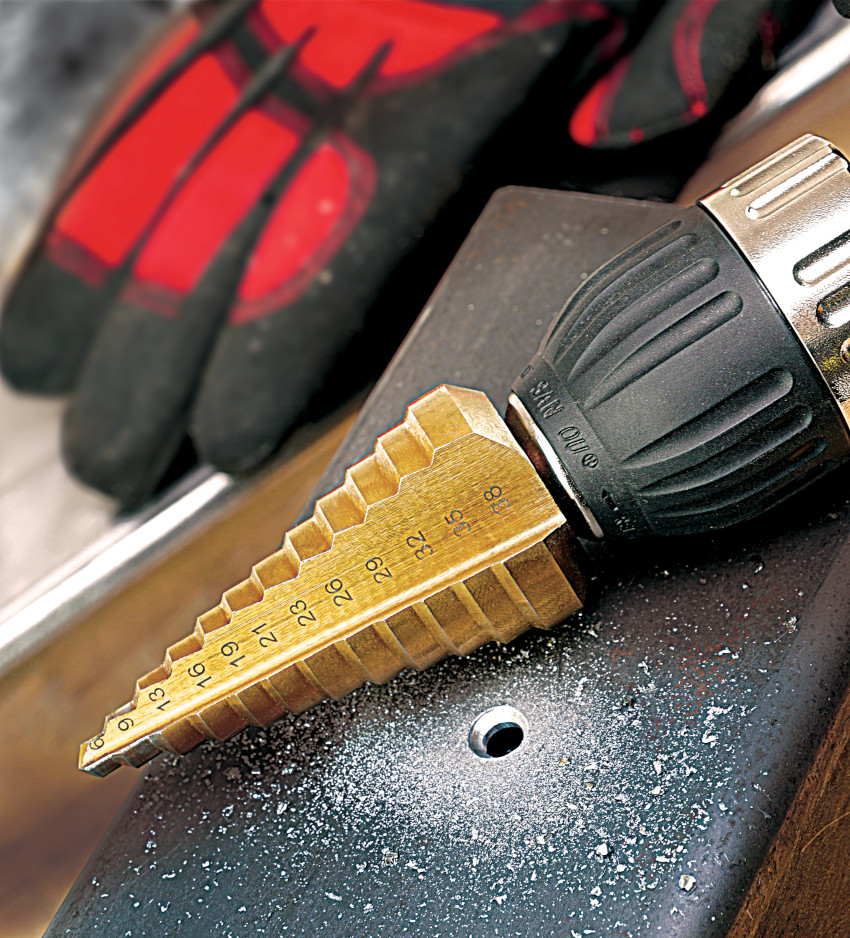
Which drill should I finally choose?
We have presented above the main features of drills that should be taken into account when buying the necessary tool. It is important to determine for what and under what conditions we want to drill or hammer, it will help us choose the right type of drill, its basic features and a working handle. The development of lithium-ion technology allows us to drill very efficiently even in concrete, and even more so when working as a DIY enthusiast, this type of power tool will prove particularly well-suited for the convenience of use.
To sum up - we recommend a drill / screwdriver to every DIY enthusiast - it is a basic tool that will improve many activities with a little practice. When choosing a model, it is worth knowing about and choosing a construction not only with the parameters appropriate to your needs, but also offering additional possibilities, such as a battery compatible with other devices. Therefore, you should definitely pay attention to the drill driverSAS + ALL DED7041 and DED7142 series arcs with 50Nm and impact. For drilling in wood and metal, we recommend non-impact drills such as DEDRA DED7957. For work requiring greater precision, we recommend table drills with a stand, such as DEDRA DED7708C.
For drilling in concrete, we recommend the SDS + DED7850 hammer drill , which will also allow for chiselling. Useful for removing tiles and glue residue. For heavy-duty work, we recommend rotary hammers such as DEDRA DED7837 , which can handle even the hardest materials, and additional construction features such as the AVR anti-vibration system significantly increase the comfort of use.
We hope that the above text will make the choice easier. Successful drilling
- For telephone orders, we are available every day of the year from 8:00 to 19:00
- Dunajska cesta 101
- 1000 Ljubljana
- Slovenia EU
- +38670 51 51 50
- info@tisto.eu
© 2009 - 2025 TISTO. We make every effort to publish only verified and correct data; if you find untrue or inappropriate information on our site, please let us know at info@tisto.eu. The photos do not guarantee the properties of the products.








